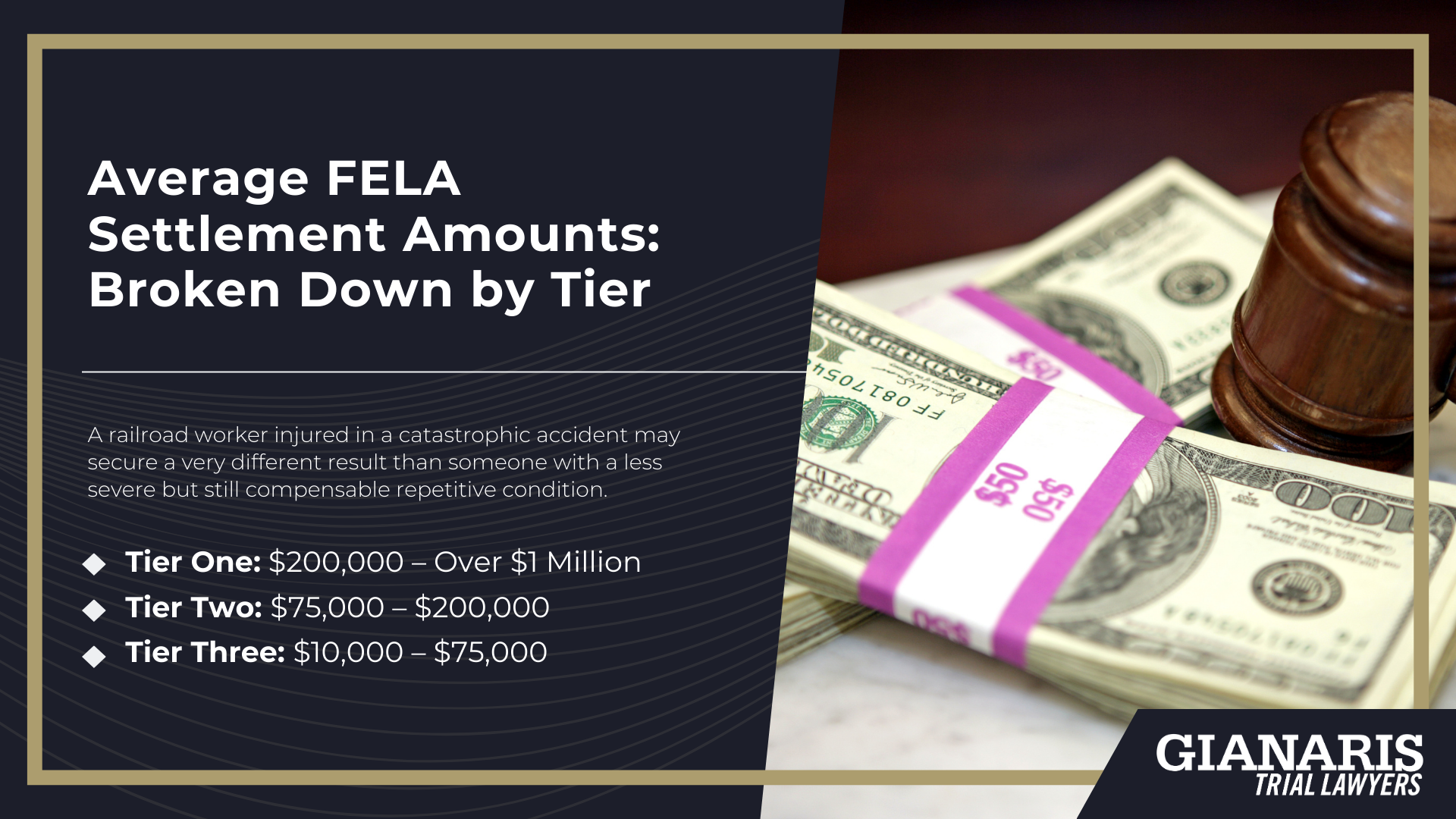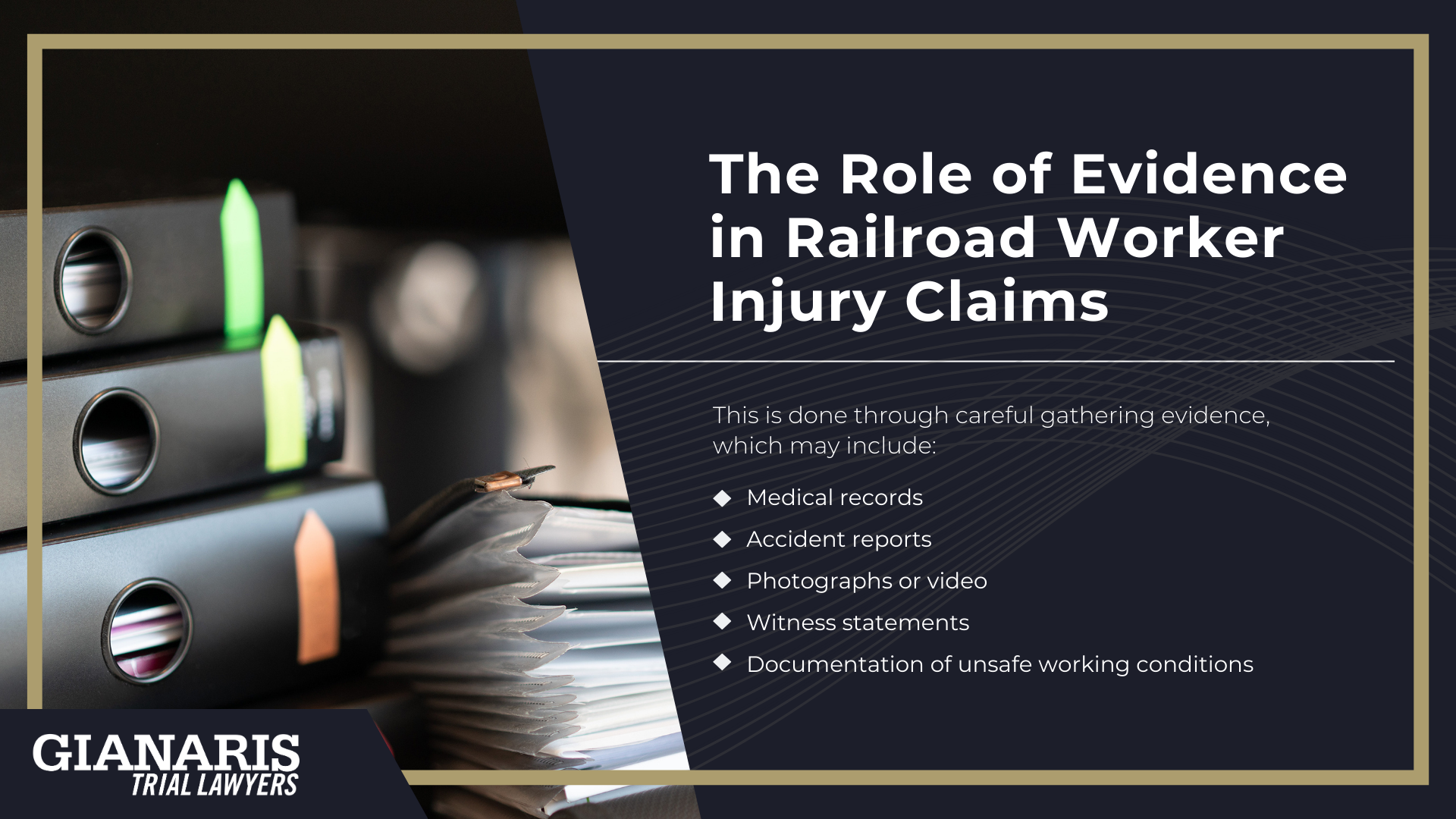Settlement values in FELA cases are shaped by more than just the injury itself.
The severity of harm, the length of recovery, and whether an employer’s negligence or a railroad’s violation of safety laws can be proven all weigh heavily on the outcome.
The age and earning capacity of the injured employee, the strength of medical evidence, and the location where the lawsuit is filed also play important roles.
Unlike the limited recoveries available in most workers’ comp claims, FELA allows injured workers to seek a fair settlement for their full damages, including pain and suffering, long-term care, and diminished earning power.
A railroad worker injured in a catastrophic accident may secure a very different result than someone with a less severe but still compensable repetitive condition.

Tier One: $200,000 – Over $1 Million
The highest tier of FELA cases applies to the most severe injuries, life-altering occupational diseases, and situations where clear evidence of an employer’s negligence or a railroad’s violation of safety standards exists.
These claims often involve a railroad worker injured so significantly that their ability to return to the workforce is permanently impacted, and the costs of care and treatment stretch across a lifetime.
Examples of injuries and diagnoses in this tier include:
- Catastrophic injuries such as amputations or crush injuries from a major railroad accident
- Multiple surgeries for spine, back, or joint damage resulting in permanent disability
- Cancer diagnosis linked to toxic exposures in the railroad industry, including diesel exhaust, asbestos exposure, or benzene
- Severe head trauma or traumatic brain injury with long-term cognitive impairment
- Wrongful death claims brought by families of workers fatally injured or diagnosed with terminal illnesses caused by workplace exposures
In these matters, juries and settlements recognize not just the immediate physical injuries but also the compounded burden of lifetime medical expenses, significant lost wages, and diminished earning potential.
Pain and suffering, loss of enjoyment of life, and the devastating impact on families are also central to valuation at this tier.
Because of the gravity of these outcomes, Tier One often results in settlements or verdicts exceeding $1 million, reflecting the profound financial and personal costs faced by injured workers and their loved ones.
Tier Two: $75,000 – $200,000
This middle tier fits serious, non-catastrophic injuries where a railroad worker injured in a railroad accident (or acute on-the-job event) needs significant treatment, often surgery, and loses months of work, yet ultimately achieves a partial recovery.
The worker may return to duty or transition to lighter work, but permanent restrictions, chronic pain, or diminished strength/endurance remain.
Values in this tier rise when evidence of the employer’s negligence or a railroad’s violation of safety rules is clear and when wage loss is substantial.
Examples of injuries and diagnoses in this tier include:
- Neck injury or spinal cord injury
- Major shoulder injury
- Significant knee injuries
- Hip/pelvic or long-bone fractures
- Broken bones
- Hand/forearm crush injuries
- Facial/orbital fractures
- Documented inhalation injury
In these FELA cases, settlement value reflects the railroad industry craft wage rate, time off work, and any long-term loss of earning capacity, plus pain and suffering and future medical care, damages not available in the same way under typical workers’ comp.
Proven safety defects or statutory violations can push a Tier Two matter to the upper end of the $75k–$200k range, while disputed liability, strong comparative-fault arguments, or faster recoveries trend lower.
Tier Three: $10,000 – $75,000
This lowest tier covers less severe physical injuries where the injured employee is able to recover with minimal long-term impairment.
These cases often involve conditions that require medical treatment, therapy, or short-term time off work but do not result in permanent disability.
Settlements in this range reflect the fact that while the injuries may cause pain and inconvenience, they do not prevent the worker from resuming their career in the railroad industry.
Examples of injuries/diagnoses that typically fall in Tier Three include:
- Carpal tunnel syndrome or tendonitis
- Repetitive stress injuries such as mild tendonitis or overuse conditions
- Minor back or neck strain
- Shoulder or knee sprains
- Broken fingers, toes, or simple wrist/ankle fractures
- Contusions, lacerations, or soft tissue injuries
- Temporary respiratory irritation
Even though the on-the-job injury in this tier may seem “minor” compared to catastrophic accidents, FELA still allows injured workers to pursue recovery when employer’s negligence contributed to the harm.
The value of these claims is typically limited by the shorter recovery time, lower medical expenses, and minimal wage loss.
Still, they provide a way for workers to hold the railroad company accountable for unsafe conditions and to secure a fair settlement that recognizes the disruption and pain caused by the incident.









